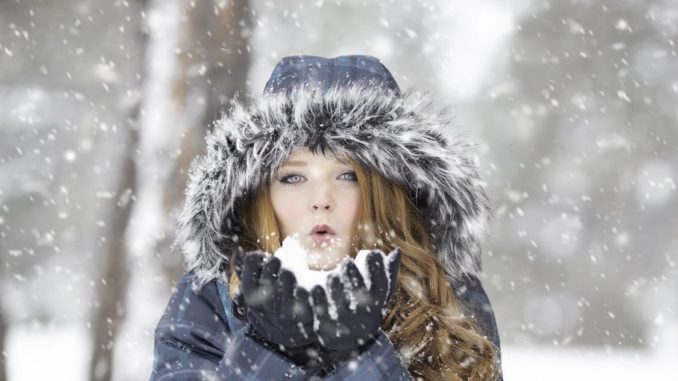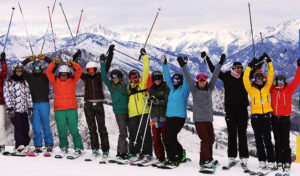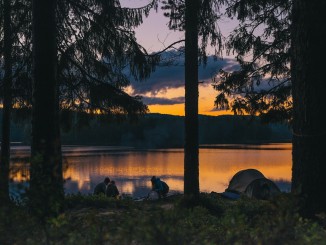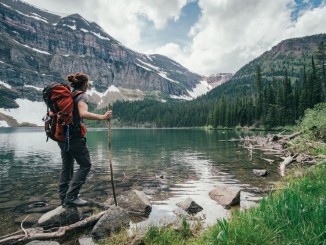
The winter safety tips for spending time outdoors may save you from danger, or worse, having to rest at home throughout the season. See them all here!
Winter is the lone season for you to enjoy skiing, making a snowman, and drinking hot chocolate by the fireplace. When the snow melts and the temperature increases, you’ll need to wait for almost a year to experience it again.
That is a total bummer, no less, yet it’s a natural flow you should go with.
The only way you can make the most out of it is by never being injured during these frosty months. You certainly don’t want to stay at home while envying your friends as they play on the ice, right?
So, get in a comfortable position and learn some winter safety tips for spending time outdoors.
Tip #1: Layer Your Clothes Well.
 Layering the outfit is highly significant to keep you comfortable the entire day. I don’t mean it in a fashion sense, to be perfectly clear with you. It’s fine to want to look gorgeous, for sure, but it becomes your least priority when facing hypothermia or influenza.
Layering the outfit is highly significant to keep you comfortable the entire day. I don’t mean it in a fashion sense, to be perfectly clear with you. It’s fine to want to look gorgeous, for sure, but it becomes your least priority when facing hypothermia or influenza.
A sensible technique when doing so is matching both thick and thin garments. The reason is that the sun can still shine anytime; you just don’t know when. This ensemble will then allow you to remove and put the warm layers back on whenever necessary.
Tip #2: Try Not to Overwork Yourself.
Many individuals believe that doing additional tasks in the cold can provide extra balminess to the body. If that’s all you’re aiming for, however, it’s better to set up a home foot spa to comfort your muscles.
The reason is that the heart – the organ that pumps blood – functions best at room temperature. It will be stressful for your heart to perform its job and battle the climate drop at once. Due to that, people experience high blood pressure or cardiac arrest while completing their open-air jobs in this season.
Tip #3: Listen to Weather Reports Daily.
One of the winter safety tips for spending time outdoors is tracking the weather news almost every hour.
You cannot predict when a phenomenon will take place just by staring up at the sky. Even the weathermen employ special devices to monitor the movement of the clouds that carry them.
The deadliest cases that wintertime brings include hailstorms, snowstorms, and blizzards. The hailstones, in fact, may actually knock out a healthy adult when a large piece falls on their head. The other two instances, on the contrary, have both ice and strong winds – natural forces you shouldn’t take on ever.
Tip #4: Let Family or Friends Know Your Traveling Itinerary.
For emergency situations that require you to drive through the sleek roads, never go without telling anyone about it. There have already been highway misfortunes recorded that shocked the victims’ families since they weren’t aware of their plans.
It isn’t hard to text someone and say, “I will depart at this hour and arrive at that hour.” Inform them about the routes you wish to take too and the exact location of your destination. If it’s possible, message these folks in between short stops to let them know of your current status.
Tip #5: Stay Cautious About Liquids Touching Your Skin.
The ice dissolving into water on the clothes you’re wearing can definitely freeze you to the bones. However, do you realize that it isn’t the only fluid you should stay away from?
Alcohol is a liquid too. Whether you drink the substance or use it to disinfect your hands, it shouldn’t drench your system. After all, the compound evaporates fast and pulls the latent heat out of the body.
The same goes for the gasoline that delivers energy to ice blowers and vehicles. Transfer it carefully in the tank, and avoid spilling any on yourself. Do it not only because of the flammability hazards but also because that will leave you freezing out there.
Tip #6: Keep the Kids in Check While Playing Outside.
The sixth out of the eight winter safety tips for spending time outdoors concentrates on the welfare of the children.
These cute angels don’t look for new toys when there’s a bed of snow waiting outside. You must always accompany them, though, to prevent the kids from meeting accidents while playing.
The most ideal moment to let the youngsters go out is as soon as the flurry stops. That’s when the ice is still not packed; thus, they won’t get hurt after landing on soft snow.
Tip #7: Wear Proper Gears for Winter Activities.
Clothes may cover your body parts well, yet they still can’t protect your face and joints from sport injuries.
The elbow and knee pads, for that reason, should be atop your list before participating in a winter activity. A helmet can also come in handy, especially if you think about the slopes where you might tumble. The snowmobile goggles are useful for any occasion as well, even if you won’t ride one often.
Tip #8: Don’t Ride A Ski Or a Snowboard Without Knowing the Basics.
 Resorts hire instructors for a reason besides the obvious one: to avert guests/newbies from being bruised in their property. Considering you’re a beginner too, avail the lessons they offer to improve your capabilities before riding downhill.
Resorts hire instructors for a reason besides the obvious one: to avert guests/newbies from being bruised in their property. Considering you’re a beginner too, avail the lessons they offer to improve your capabilities before riding downhill.
Other than skills, the experts can teach you regarding the proper attire for your activity of choice. Snowboard boots, for example, is different from the pair used for skiing. Try not to interchange them to maintain your well-being on the snow.
Conclusion
Winter sports are an incredible way for you and your family or friends to get outside and have fun together. If you haven’t got any time outdoor, you can use home gym equipment. There are many home gym equipment like rowing machine,vertical climbers, elliptical machine. You can use them to simulate walking, hill climbing or running.
Lastly, ensure that you have a mental or physical note of these winter safety tips for spending time outdoors. It pays off to recall them every day during wintertime as we’re only humans who tend to slip up sometimes. This way, you can just relax before bed and not worry about injuries.
What other winter safety tips can you share to us? Write it in the Comments below!




Be the first to comment